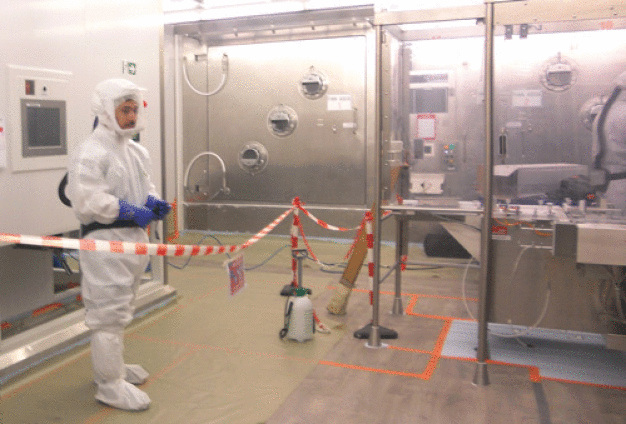Anna Chtorkh
Case study : How to dispose of equipment containing hazardous products?
When our customers wish to dispose of contaminated obsolete or defective equipment, sending this cumbersome waste as is to a hazardous waste treatment facility is often the first solution that comes to their mind. The following case study shows that on-site decontamination can render the waste appropriate for disposal in a non-hazardous treatment facility – a less lengthy and more cost-effective solution.
In March 2019, CURIUM received a request from a medical centre in Switzerland for the disposal of a refrigerator contaminated with osmium tetroxide on its internal walls. Treating the waste in Switzerland appeared too complicated: the refrigerator needed to be cut in pieces in order to be accepted by the hazardous waste treatment facility. The customer had considered sending the waste to France without prior decontamination or dismantling. This solution presented regulatory constraints which would have entailed significant costs: the completion of a notification document for the transboundary movement of hazardous waste, and the proper packaging and transportation of the waste according to the ADR regulations. We proposed several alternative solutions, and the customer finally opted for on-site decontamination of the refrigerator so that most of it could be disposed of as non-hazardous waste.
After a contamination study, we found an optimal decontamination method to neutralize the oxidative nature of osmium. The decontamination operation was carried out on the customer's site, while applying all chemical safety measures such as zoning and wearing appropriate PPE. The fridge chamber was completely decontaminated and eliminated in Switzerland as a non-hazardous waste. Heavily contaminated porous plastic elements were dismantled, cut and packaged in accordance with the Swiss hazardous waste treatment facility’s specifications. As a matter of fact, their complete decontamination would had taken too much time and resulted in a higher cost than their disposal as hazardous waste. By opting for preliminary decontamination, the customer was able to dispose of the entirety of the waste in Switzerland, and to make a 30% saving compared to the solution consisting in exporting the waste.
In summary, preliminary decontamination is preferred when:
- the waste can be partially recovered
- it cannot be accepted as is by a waste treatment facility
- decontamination and disposal in a non-hazardous waste treatment facility is more cost-effective than its treatment as hazardous waste.
Decontamination appears to be the most optimal solution for the disposal of equipment such as extractor hoods, refrigerators, freezers, gloveboxes, biological safety cabinets, etc. Intermediate tailor-made solutions depending on the type of equipment and the hazardous product it contains are also possible, in order to optimize costs and maximize the safety of personnel handling the waste.
CURIUM
69700 Montagny
France









